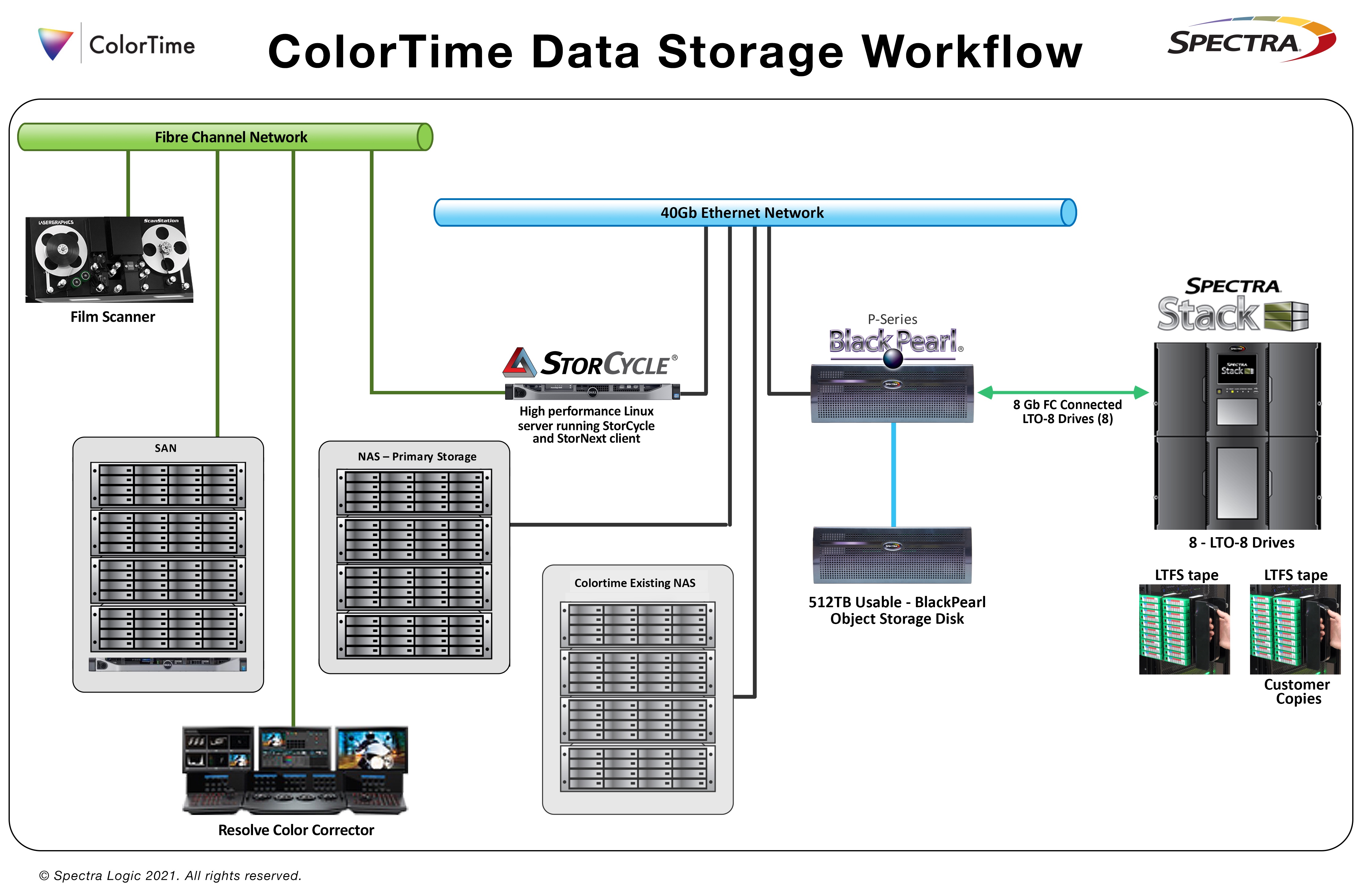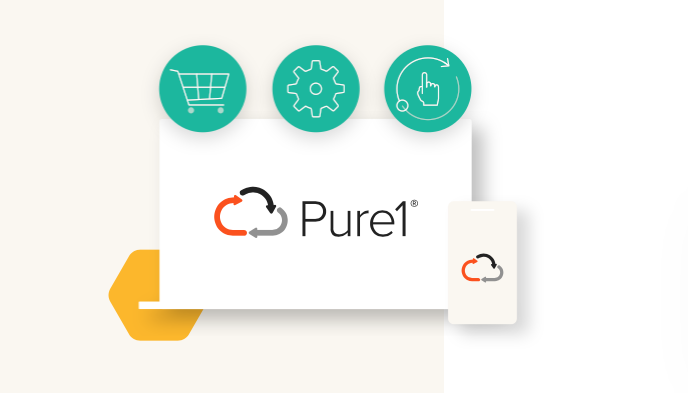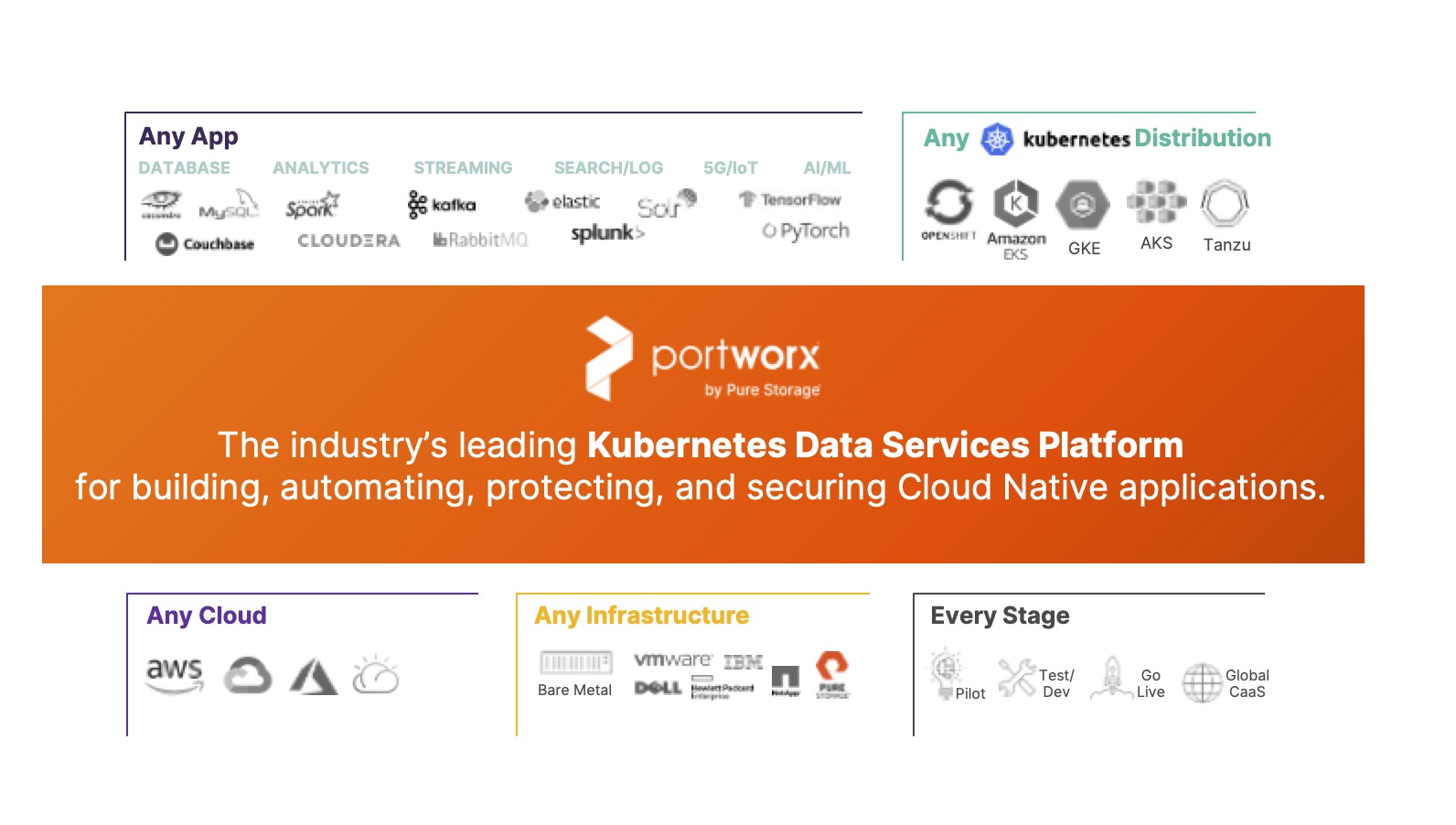Network Storage
Data Centres
Network Storage
The changing landscape of data centre energy storage
Rapid technology advances are about to shift the landscape
of energy storage options for data centre operators, whether running 250kW edge
computing sites or 100MW hyperscale facilities.
From battery banks to gravity, for emergency back-up discharge
in seconds or long-term discharge over days, weeks, and months; how energy is
stored on-site and off-site has the potential to radically shake up data centre
power chain design and operation.
Solutions already in use include the increasingly common
Lithium-ion batteries and the familiar kinetic flywheels. Less familiar may be gravity
and liquid air energy storage.
Here i3 Solutions Group offers a high level ‘What is...’ list of just some of the new and not so new technologies that are in use today and those that could find their way into the data centres of the future.
Lithium-ion batteries
Use of Li-ion has grown rapidly in data centres. As the Uptime Institute reported, this is mainly due to better energy density, rechargeability and management. It says “Li-ion energy storage is also regarded as a key component in renewable energy distribution, which is being adopted primarily to reduce carbon emissions.” In addition to being more compact and lightweight than VRLA equivalents, advantages of Li-ion include energy capacity superiority, lower battery discharge through efficiency; extended lifespan; software optimisation enhancement and better remote management capability.
While questions remain about how sustainable Li-ion is when
measured across its entire lifecycle, from sourcing raw materials to operation,
disposal and recycling, the use of Li-ion battery banks in data centres of all
sizes will continue to grow in the near term.
The
UTI says ‘there are now dozens of companies with Li-ion recycling services or technologies’,
and it advises that ‘the best way for data centre operators to reduce the
impact of Li-ion use will be to open a serious dialogue with suppliers.’
Meanwhile, large deployments are being planned. In late 2020 Google says: “In Belgium, we’ll soon install the first ever battery-based system for replacing generators at a hyperscale data centre… batteries are multi-talented team players: when we’re not using them, they’ll be available as an asset that strengthens the broader electric grid.”
In
every sector, data centres already make use of tens of thousands of cells in
battery systems – they may also need to renew thousands of them each year.
Lithium is not the only battery technology option available. More
sustainable battery types, with high enough energy densities, are being
developed and some may start to compete as they become more cost-effective;
these include flow batteries, zinc nickel and sodium-ion.
Using a less expensive and more common element than Lithium, Sodium-ion
cells can be recharged in around a fifth of the time. The technology is cost-effective
and sustainable, which includes using local bio-based energy sources in the
battery supply chain. For example, researchers in Germany are exploring the use
of local agricultural waste in sodium-ion energy storage chemistry.
Kinetic
Flywheels have been used to store energy for thousands of years.
Today in data centres across the world, tens of thousands of flywheels are used
for short term energy back-up power.
Kinetic energy as the name suggests is energy generated via motion
of an object. In classical mechanics, kinetic energy (KE) is equal to half of an
object's mass multiplied by the velocity squared. Kinetic energy = ½
(mass)*(velocity)2.
A flywheel system stores energy mechanically in the form of
kinetic energy by spinning a mass at high speed. Electrical or mechanical
inputs spin the flywheel rotor and keep it spinning until called upon to
release the stored energy. The amount of energy available and its duration are
governed by the mass and speed of the flywheel.
Kinetic flywheels have seen success as energy storage components
in the UPS power infrastructure. These systems indirectly provide electrical
energy for the data centre from low and high-speed flywheels.
Compressed Gas Storage
Liquid air energy storage
Liquid air energy storage (LAES) stores liquid air inside a tank
which is then heated to its gaseous form, the gas is then used to rotate a
turbine. Compressed gas systems have high reliability and a long-life span that
can extend to over 30 years.
LAES, also referred to as Cryogenic Energy Storage (CES), is a long duration, large scale energy storage technology that can be located at the point of demand. The working fluid is liquefied air or liquid nitrogen (~78% of air). LAES systems share performance characteristics with pumped hydro and can harness industrial low-grade waste heat/waste cold from co-located processes. Size extends from around 5MW to 100+MWs and, with capacity and energy being de-coupled, the systems are well suited to long duration applications.
Source: Energy Storage Association
Adiabatic Compressed Air Energy Storage
An Adiabatic Compressed Air Energy Storage (A-CAES) System is an energy storage system based on air compression and air storage in geological underground voids. During operation, the available electricity is used to compress air into a cavern at depths of hundreds of metres and at pressures up to 100 bar. The heat produced during the compression cycle is stored using Thermal Energy Storage (TES), while the air is pressed into underground caverns. When the stored energy is needed, this compressed air is used to generate power in a turbine while simultaneously recovering the heat from the thermal storage.
Source: https://ease-storage.eu/wp-content/uploads/2016/03/EASE_TD_ACAES.pdf
Pumped hydro
Pumped-storage hydropower (PSH) is classified as a hydroelectric
energy storage that is configured with two water reservoirs at different
elevations which generates power as water passes through a turbine and draws
power from the water pumps recharge to the upper reservoir.
PHS are characterised by two different capabilities - the first is an open loop connected to ongoing hydrologic connection to a lake and the second is where two reservoirs are separated from an outside water body.
According to the US Government Office of Energy Efficiency and
Renewable Energy “Pumped-storage currently accounts for 95% of all utility-scale energy
storage in the United States.”
Tidal current
This renewable energy source is powered by the natural tidal
activity of the ocean tides and currents. The movement is a type of kinetic
energy, and the tidal power surrounds gravitational hydropower that uses water
movement to push a turbine and generate electricity. The submerged turbines are
similar design to miniature wind turbines.
Vortices, whirlpools and eddies are common occurrences on almost every global coastline and are predictable and powerful movements. Tidal data centre projects under development include SIMEC Atlantis Energy ambition for a facility in Caithness, Scotland, powered by 80MW of tidal power. Other projects are proposed for construction near the shoreline in locations such as Atlantis Singapore, Hammerfest Strom Norway, MCT Northern Ireland, and Open Hydro Orkney Islands.
Gravity storage
A Gravity storage scheme involves a piston with millions of metric
tons raised by water pressure to store energy. As the piston descends this
pushes water through a generator to deliver electricity.
Prototype gravity storage projects are being developed by firms
such as Scotland based, Gravitricity. It is building a prototype 250kW gravity
power unit using towers. It says its units could deliver peak power outputs of between
1 and 20 MW, function for up to 50 years with no loss of performance and
deliver full power in under one second.
At the other
end of the scale Gravity Storage concepts are based on the hydraulic lifting of
a large rock mass using water pumps. The rock mass acquires potential energy
and can release this energy when the water that is under pressure is discharged
back through a turbine.
According to Heindl Energy Gravity Storage, a rock mass with a diameter of 250m would result in a storage capacity of 8 GWh, which is comparable to the largest pumped storage power station in Goldisthal, Germany (8.4 GWh). It says gravity storage of this type is a concept with which unprecedentedly large quantities of power can be stored over long periods. The capacity of energy storage can be between 1 and 10 GWh, comparable to large Pumped Hydro Storage.
New power storage, new power chain
In the drive for Green House Gas abatement and net zero operation,
every energy storage option at source, grid, switch, battery, UPS and generator
back up in data centres is changing.
The i3 Solutions Group and EYP Mission Critical Facilities Inc., (EYP MCF) collaboration on greenhouse gas abatement has issued the first in a series of white papers providing detailed technical analysis for data centre operators as they move to carbon net zero operations.
The new series of white papers aims to provide vendor-neutral
decision-making support together with insights into the factors associated with
the many technology options currently available to the sector for lowering the
carbon footprint of data centre operations.
Beatrice - 7 July 2021
Data
Network Storage
Spectra Logic StorCycle Software Migrates and Manages Storage
Spectra Logic has announced that ColorTime deployed Spectra’s StorCycle Storage Lifecycle Management software to automate cleanup of their production storage area network (SAN) and free up space for their incoming digital content. At the same time, ColorTime also installed a Spectra BlackPearl Converged Storage System, a Spectra BlackPearl Object Storage Disk System with 500 terabytes for quick recall of active projects, and a Spectra Stack Tape Library to ensure safe, scalable and economical preservation of its high-resolution digital media.
ColorTime,
an established Hollywood post-production studio that specialises in all aspects
of digital media, content creation, and management and distribution for TV,
needed to find a solution to their overflowing repository of digital content.
ColorTime ingests raw camera footage to be colour corrected and edited, and
also scans original film as high-resolution digital intermediate files to be
stored. All of this amounts to the processing of millions and millions of small
files as part of their busy media workflow.
Their
growing content was overrunning ColorTime’s SAN, and they wanted to reduce the
amount of data on their primary storage tier, freeing up room for incoming
projects. They also needed to manage their folders and files based on customer,
age and type so that assets could be searched and recalled easily and quickly.
Lastly, they wanted to copy projects to a tape library where they could be
stored until finishing as well as for cost-effective, long-term
archiving.
After
a thorough review, ColorTime chose a complete storage solution from Spectra
Logic that improves content management, helps to streamline post-production
workflows, maintains content availability, and safeguards data for distribution
and future use.
ColorTime
deployed StorCycle software because of its ability to identify inactive files
and migrate them off the SAN to lower-cost storage options via their new
BlackPearl Converged Storage System, while still enabling ColorTime
professionals to easily find and restore those media assets. In addition,
StorCycle makes it possible to re-use predefined migration jobs and automate
the cleanup of production storage on an ongoing basis.
“Spectra’s StorCycle storage management software was exactly what we needed to scan and move files to free up space on our storage area networks, enabling us to reduce spending on additional SAN clusters,” says Bill Wornack, chief technology officer at ColorTime.
The
studio also deployed a BlackPearl Object Storage Disk system that stores active
projects and high-resolution work-in-progress files with expiration dates of 30
days for efficient use of space and quick recovery. In addition, the newly
deployed Spectra Stack Tape Library provides ColorTime with a modular long-term
data repository that will enable them to seamlessly scale as their storage
needs grow.
“I am amazed at the size of ColorTime’s projects, the depth of their attention to detail, and the breadth of their organisation’s capabilities. I am proud that Spectra Logic is a part of their workflow and viewed as a trusted vendor,” says Nathan Thompson, Spectra Logic CEO and Founder.
“Working with Spectra has been seamless from sales to implementation, and we are confident in the solution’s future roadmap and our long-term relationship with the company,” Wornack adds.
Hossein ZiaShakeri, Spectra Logic vice president of business and strategic alliances, comments, “We could not be more pleased that ColorTime selected Spectra Logic’s total solution to help automate their workflows and create efficiencies that are directed toward high-quality creative work.”
Beatrice - 1 July 2021
Data Centres
Infrastructure Management
Network Storage
Networking
Creval deploys Pluribus for Data Centre Network modernisation
Pluribus Networks has announced that Credito Valtellinese (Creval), has completed deployment of a new multi-site data centre network fabric using Dell EMC Powerswitch S5200-ON series switches running the Pluribus Netvisor ONE operating system and Adaptive Cloud Fabric software. The fabric spans and enables two new active-active data centres which provide near-zero downtime for banking applications, ensuring a high-quality experience for Creval’s customers. The fabric was also extended to Creval’s two legacy data centres to support seamless migration of workloads to the new data centres with no service disruption to customers, eventually enabling Creval to decommission the legacy data centres after all workloads were migrated.
With expanding
business operations that include more than 3,400 employees in 11 regions
through a distribution network made up of 355 branches, Creval needed to
modernize its data center network to meet its ever-increasing IT workloads and
respond to evolving customer expectations. Its legacy network consisted of two
data centers, located approximately 150 kms apart, with applications announced
over a private MPLS WAN towards the 300+ bank branches. With its data center
architecture based on older switches, Creval faced multiple issues related to
disaster mitigation and recovery, siloed services between single data centers
and outdated storage systems and firewalls among the switches.
The goal of the modernization project was to provide
Creval with a highly scalable, agile and resilient data center architecture. An
automated network fabric was critical to achieving these goals and, after
investigating multiple networking solutions, Creval ultimately selected
Pluribus Netvisor ONE running on high-performance open networking Dell 5200
series switches. Creval built two new modern data centers within 50 kms of each
other and interconnected the new data centers with two 10G low latency DWDM
links. Pluribus’ Adaptive Cloud Fabric solution, powered by Netvisor ONE, enabled Creval to deploy an SDN-automated,
overlay network fabric across the geographically separated data centers for
operational simplicity, agility, ease of service migration and integrated
analytics for visibility.
“Creval was committed to moving ahead with a solution that supported disaggregated networking and a vendor that had local support and could meet our stringent testing and service migration requirements,” says Bruno Franchetti, Chief Architect at Creval. “Among the key benefits of this network refresh with Pluribus, is a drastic streamlining of our disaster recovery procedures which has reduced Recovery Time Objectives (RTO) to minutes.”
“Creval’s application services can be distributed across both of our new data centres for resilience and there is complete flexibility in performing granular workload migration without impacting service performance,” comments Iacopo Salacrist, Head of Technology Division at Creval. “The IT team now has the choice to control when to move an entire service or all services from one site to the other by just reconfiguring a pair of firewall interfaces and with a minimal impact to the service availability.”
Creval joins a growing number of enterprises deploying an active-active data centre with a virtualized network overlay. In the recent State of the Data Centre Networking 2021 Annual Report based on a survey of over 260 enterprises, Pluribus and Enterprise Management Associates (EMA) found that broad deployment of active-active data centre architectures to support private cloud will nearly double over the next two years from 44 percent to 81 percent. The survey also identified networking complexity as the biggest impediment to achieving this architectural goal.
Beatrice - 10 June 2021
Cloud
Data
Data Centres
Network Storage
Networking
Pure Storage helps channel partners supercharge their subscription business
Pure Storage has announced updates to channel incentives and offerings to enable partners to grow their subscription business with Pure.
To adapt and thrive in today’s environment, customers want complete flexibility, agility, transparency, and simplicity - benefits often best achieved through subscription services. With Pure’s suite of subscription offerings, including Pure as-a-Service, Evergreen program, Pure Cloud Block Store, and Portworx, partners are able to meet their customers' evolving needs while generating recurring revenue.
“Two of Pure’s greatest strengths are our industry-leading subscription services and our partner-led approach - both are foundational to our business and the way we serve our customers. We are thrilled to see our partners’ continued momentum with Pure as-a-Service and are excited to deliver new opportunities for partners to make an impact through our unique and differentiated subscription offerings”, says Andy Martin, Vice President, Global Partner Sales, Pure Storage.
Pure as-a-Service partner rebate
Partner momentum in selling Pure as-a-Service is strong, with more than double the number of partners transacting this year versus last year.
Only Pure delivers a true enterprise class utility with flexible storage consumption, a cloud experience on premise, and aligns spend with actual consumption. Pure has continued to advance its Pure as-a-Service offerings, reducing complexity by eliminating additional licenses and support costs and introducing a service catalogue with transparent pricing.
Now partners can make even more money selling Pure as-a-Service. With a new partner rebate, partners earn 5% of the total contract value on closed eligible Pure as-a-Service wins up to US$100,000 per deal.
Portworx transitions to 100% channel model
As enterprises look towards modern, cloud-native applications to power the next phase of their business, channel partners will be critical advisors, helping customers navigate a Kubernetes and container-based world.
With Portworx, which Pure acquired in late 2020, Pure delivers the industry’s most complete Kubernetes Data Services Platform for building, automating, protecting, and securing cloud-native applications. Customers are able to accelerate their digital transformation by easily running any cloud-native application, in any cloud, using any Kubernetes platform with built-in high availability, data protection, data security, and hybrid cloud mobility.
With Portworx sales now 100% channel led - just like the rest of Pure’s products and services - partners are able to expand their subscription offerings to cover Kubernetes-based applications.
New Pure1 partner portal for managing customer subscriptions
Pure has extended Pure1 to give partners access to manage subscriptions on behalf of their customers, empowering Pure’s partner ecosystem to bring a fully operational service with full transparency to joint customers. Customers using Pure1’s self-service portal are also able to buy new services or expand their as-a-Service footprint via their channel partner whenever they need.
Carly Weller - 13 May 2021
Data
Network Storage
Pure1 Digital Experience transforms the purchasing, management and optimisation of infrastructure
Pure Storage has announced the new and improved Pure1 Digital Experience. These enhancements give customers additional control by delivering new automated monitoring and AI-driven recommendation capabilities with self-service management and digital procurement.
IT teams are playing an increasingly central role in enabling the business, yet oftentimes remain saddled with burdensome IT management, troubleshooting, complex planning, and complicated purchasing processes. What they want is automation, self-service, and clear vendor SLAs to drive outcomes.
Similar to how Pure redefined the business models that underpin storage infrastructure with Evergreen and Pure as-a-Service, the Pure1 Digital Experience is redefining the rest of the IT ownership experience, enabling IT teams to anticipate needs, acquire resources on their terms (and on their time frames) while eliminating risks to the business - around purchasing, data protection, and customer satisfaction.
“Pure has always innovated for a better customer experience - an experience that is simple and streamlined with unparalleled support. By giving our customers more control over their environments and active recommendations for solving problems before they happen, we’re delivering on our Digital Experience vision and transforming the IT management experience yet again”, says Prakash Darji, VP and GM, Digital Experience, Pure Storage.
Infrastructure observation and real time alerting
Pure1’s AI-engine Meta delivers predictive service management that proactively identifies issues and prescribes resolutions so that issues are resolved before they become outages. Now, Meta can identify gaps in your strategy for safeguarding data. Key updates include:
Intelligent monitoring and management of all data service platforms, whether on-premises FlashArray or FlashBlade, cloud-native on Portworx, or through Pure Cloud Block Store for AWS and Microsoft Azure.Predictive fault analysis and resolution using analytics gathered from across Pure's ecosystem - including VMs and containers - to quickly pinpoint potential challenges.Assessments for ransomware protection, with proactive recommendations for solutions like SafeMode snapshots.Real time troubleshooting using new search capability across storage and VMs.
AI-driven performance, capacity, and expansion recommendations
The new Pure1 Digital Experience not only tracks how resources are being used, but forecasts what will happen if you add or move workloads. Using AI, the planning capabilities of Pure1 delivers smart workload planning with recommendations on workload capacity and performance scaling. It also uses predictive analytics and alerting to ensure IT organisations meet SLAs and keep workloads operating in a healthy state, and is monitored by the Pure team to support pre-emptive service calls.
Self-service management and digital procurement
With the expanded offers in Pure1 service catalogue, users have full access to the broadest range of on-premise and hybrid cloud storage offerings and professional services from a single interface. Through this self-service catalogue, customers can:
Buy new systems and services - including Pure as-a-Service, Portworx, and Pure Cloud Block Store - or expand their as-a-service footprint on demand, whether on premises or in the cloud via AWS or Azure.Order from a rich set of professional services like advisory workshops, migration services, implementation strategy, and third party software integration services.Quote, order, and track new system additions from anywhere.Manage Pure as-a-Service subscriptions with easy add, upgrade, suspend, resume, limit, and renew functions.Schedule upgrades at your convenience, with pre-checks done automatically.
Carly Weller - 13 May 2021
Data
Data Centres
Network Storage
Pure Storage redefines storage for modern applications
Today at Pure//Accelerate Digital, Pure Storage announced the release of Portworx Enterprise 2.8. With new integrations across Pure’s portfolio of products and services and with VMware Tanzu, customers can now use Portworx to scale their Kubernetes usage to greater levels with unprecedented simplicity.
With new capabilities such as dynamic storage provisioning on FlashArray and FlashBlade, and unified visibility and support via Pure1, Portworx enables containerised workloads to run seamlessly across the cloud, bare metal infrastructure, Pure Storage arrays, and even competitive storage solutions.
Gartner predicts that by 2025, 40% of infrastructure and operations leaders will implement hybrid cloud storage architectures, up from 15% in 2021. As customers adopt hybrid cloud strategies, they still need a consistent environment to run their modern applications. That means they need the same level of storage and data management capabilities, regardless of if they are in the cloud, or on-premises.
With the latest release of Portworx Enterprise 2.8, customers get the same cloud-like experience for Kubernetes apps wherever they live, with broad Kubernetes ecosystem support. New capabilities include:
Portworx delivers the simplest way to run Kubernetes applications at enterprise levels of scale and resiliency: The 2.8 release of Portworx Enterprise goes significantly beyond the capabilities offered by other storage solutions who are limited to the ‘connector’ approach facilitated by the Kubernetes Container Storage Interface (CSI), resulting in least common denominator features and limited scale. With a Kubernetes-native software approach built to support enterprise levels of scale and resiliency, Portworx combines cloud-native storage management and data protection services with best-of-breed Pure Storage FlashArray and FlashBlade for seamless deployment. Now when users provision container-native volumes through Portworx, storage volumes or file systems are automatically created on FlashArray and FlashBlade. This allows true storage-as-code, as volumes and file systems can be provisioned using Kubernetes without the need to directly interface with the backing storage arrays. Container-native volumes receive the full suite of Portworx container storage management features, including backup, disaster recovery, security, auto-scaling, and migration - features that aren’t tied to hardware and travel with the containerised application as it moves between on-prem and cloud deployments. With this new integration, customers can manage their modern applications in a Kubernetes-native way, while taking advantage of the enterprise capabilities of their Pure arrays such as deduplication and compression, achieving data reduction levels up to 10:1 depending on workload and a demonstrated 99.9999% reliability across 40,000+ arrays.
Predictive-capabilities of Pure1, now for Kubernetes apps running on Portworx: With the latest Portworx release, Kubernetes cluster and volume usage metrics collected by Portworx will be sent to Pure1, providing a unified observability stack and support experience for a customer’s Kubernetes applications with Portworx in the Pure1 portal, allowing customer to see their deployments end-to-end and troubleshoot issues with Kubernetes applications. Additionally, as Pure1 collects data necessary to understand deployment patterns, it enables customers to benefit from the predictive support capabilities of Pure1, powered by the Meta AI engine, which aims to detect anomalies and suggest resolution advice before issues become outages. With Portworx fully integrated with the global Pure support organisation, this end-to-end data gives a highly-trained support team the tools necessary to provide market-leading predictive support to all Portworx customers.
Protect Kubernetes applications and achieve fast recovery with Portworx and FlashBlade: PX-Backup was validated to work with FlashBlade - Pure’s unified fast file and object platform - to provide high-performance backup and recovery of Kubernetes-based workloads. By combining PX-Backup with FlashBlade, customers can protect their entire Kubernetes applications, including data and configuration, and benefit from FlashBlade rapid restore of up to 270 TB/hour. Pure released a Reference Architecture for this solution, which will be the first of many validated solutions.
A better container-native storage experience for VMware Tanzu as well as any CSI-compatible storage system: The latest release extends Portworx support for leading Kubernetes platforms with addition of VMware Tanzu (TKG) support via the native Tanzu CSI driver. This means that customers can benefit from container-granular data management such as backup and recovery, encryption, and migration regardless of the storage backing their VMware environment including with vSAN, VVols, and VMFS datastores, or cloud block storage providers. Additionally, with Portworx Enterprise 2.8 supporting the latest CSI specification, Portworx can provide a consistent, Kubernetes-native experience for applications running on any enterprise storage that supports CSI.
A unified experience for all Kubernetes apps running on Pure: With this release, Pure FlashArray and FlashBlade customers can use Portworx Enterprise 2.8 to achieve the highest levels of performance, scale, automation, data protection, and data security for production applications running on Kubernetes. For customers starting their Kubernetes journey without all of these advanced requirements, they can take advantage of a new offer starting this summer. Pure’s first generation Kubernetes offering, Pure Service Orchestrator (PSO), will become a part of Portworx Essentials, Portworx’s freemium offering, to provide customers with a unified storage orchestration offering for Kubernetes. The new Portworx Essentials offering enables widespread use for customers using FlashArray and FlashBlade and is both included and fully-supported in a customer’s Evergreen subscription or Pure as-a-Service subscription with more functionality than the current PSO. Additionally, customers can easily upgrade to Portworx Enterprise for additional security, data protection, and scale, while continuing to benefit from the deep integration with Pure. PSO will remain supported through the end of January 2022 at which point all customers will have to be transitioned to Portworx.
“Pure and Portworx together are redefining what storage for modern, cloud-native applications looks like. By delivering storage that can be orchestrated entirely through Kubernetes, Pure is delivering a seamless hybrid cloud experience and changing outcomes for customers”, says Murli Thirumale, VP and GM, Cloud Native Business Unit, Pure Storage.
Carly Weller - 13 May 2021
Data Centres
IT
Network Storage
Siemon launches LC BladePatch fibre jumper for data centre patching
Siemon is pleased to introduce an innovative enhancement to their proven LC BladePatch duplex fibre optic jumper. Equipped with Siemon’s new space-saving, one-piece UniClick housing, the enhanced jumpers build upon LC BladePatch’s patented push-pull latch design to provide unmatched accessibility and ease of operation in ultra-high-density fibre patching environments.
The UniClick housing features a one-piece body with an integrated switch to make it faster and easier to change polarity, with no loose parts. This reduces the LC BladePatch’s already small footprint, simplifying jumper installation and patching administration in even the tightest, side- stacked server, switch, and SAN port configurations.
The UniClick housing also improves on the jumpers patented, user-friendly fibre polarity change process by eliminating multiple components and steps by incorporating a single polarity reversal switch. “Most fibre jumpers on the market do not support field polarity changes” explains Alex Yao, Siemon Senior Product Manager, “and those that do typically require a technician to disassemble the housing and physically move and twist the fibres, creating a strong risk of damage. With LC BladePatch’s UniClick housing, you simply engage the polarity reversal switch and rotate the latches. The fibres themselves never move from their factory- terminated locations.”
These new UniClick enhancements work in
conjunction with LC BladePatch’s exclusive, patented push-pull latch. This
popular and proven design allows the connectors to be securely engaged and
removed via a finger grip on the end of the strain relief boot rather than
defeating traditional LC latches that can be extremely difficult to access in
high-density applications. To further simplify jumper installation and future
patching field management, LC BladePatch jumpers feature reduced-diameter
uni-tube cable and bend-insensitive glass fibre. This space- saving, flexible
cable reduces cable pathway congestion for improved airflow, energy efficiency
and simplified cable routing.
Siemon’s new LC BladePatch jumpers are
compatible with any standard duplex LC adapter opening or LC small-form
pluggable (SFP) module. They feature superior connector polish that meets
stringent Telcordia and ISO/IEC end-face specifications and exceeds all
ANSI/TIA and ISO/IEC insertion loss and return loss requirements. Available in
OM3 and OM4 50/125 Multimode and OS1/OS2 Singlemode, in both UPC and APC
configurations, and in OFNR, OFNP and LSOH jacket constructions, every LC
BladePatch is 100% factory inspected to ensure precise optical performance and
defect-free operation.
Beatrice - 10 May 2021
Data
Data Centres
Network Storage
Data centre leader OFFSITE selects Infinidat to increase data storage at scale
Infinidat, a provider of enterprise-class storage solutions, has announced that OFFSITE, a national provider of hosted, managed services and data centre operations based in Wisconsin, has selected Infinidat’s storage technology to support the growth of its business. Infinidat’s storage technology displaced the existing all-flash arrays that OFFSITE had been using to meet the enterprise technology requirements of its customers.
While catapulting OFFSITE into the petabyte scale for the first time, the Infinidat solution was only one third the cost of all-flash arrays for the same amount of usable storage, yet without the need to rely on compression and deduplication. OFFSITE adopted Infinidat’s elastic pricing and flexible consumption model.
“With the Infinidat storage solution, we have been able to meet the enterprise technology requirements of our customers and deliver ultra-fast, yet more cost-effective services,” says Joseph G. Rickard, CEO, at OFFSITE. “By building our on-premises, private cloud for us, Infinidat gives us the flexibility to only pay for the storage we use, allowing us to scale when more capacity is needed on demand. The capabilities that Infinidat has with VMware also make provisioning or expanding storage take only minutes.”
Steve Sullivan, EVP of Sales, North America, at Infinidat, says, “The favourable economics of Infinidat’s on-premises storage solution are changing the economics of the storage industry and what enterprise customers and cloud service providers are expecting. The success of OFFSITE is a great example of a company discovering how Infinidat delivers high performance, 100% availability and reliability at a lower cost than the all-flash product from an incumbent vendor. An increasing number of companies are making this same discovery.”
OFFSITE was founded in 2001 as a disaster and workplace recovery data centre. It has grown from a regional customer base in Illinois and Wisconsin to a national provider of private cloud services, shared and dedicated colocation services, disaster recovery services, and network operations centre (NOC) solutions to mid-market IT enterprise companies. With redundant operations in Chicago and Denver, OFFSITE’s strong suit is its ‘always available’ and 24x7 network operations centre. The company’s reliability, which its storage platform needs to ensure, continues to attract a diverse base of enterprise customers.
Infinidat’s solution aligns with OFFSITE’s goal to redefine the data centre experience. OFFSITE provides a high-performing environment for its customers to manage their data operations with a guarantee of security, a powerful infrastructure, industry-leading technology, and comprehensive expertise.
Storage consolidation was a key consideration in selecting Infinidat. OFFSITE can now fit four petabytes in one rack, allowing the company to expand its footprint and scale quickly (minutes versus weeks) from 300 terabytes up to one petabyte ̶ all while using generally available hardware that is not proprietary.
Carly Weller - 29 April 2021
Cloud
Data
Network Storage
Pure Storage brings industry leading block storage to Microsoft Azure
Pure Storage has announced the general availability of Pure Cloud Block Store on Microsoft Azure Marketplace. With a common dataplane across multicloud environments, customers can move to the cloud on their terms, allowing for seamless application portability to the cloud or the ability to complement on-premises workloads with Dev/Test, Disaster Recovery and High Availability solutions in the cloud.
While enterprises increasingly desire cloud attributes including simplicity of management, pay-as-you-go consumption, and non-disruptive upgrades, they know the best way to achieve their goals is to implement a hybrid approach to IT. According to predictions from IDC, by the end of this year, more than 90% of enterprises worldwide will meet their infrastructure needs with a mix of on-premises/dedicated private clouds, several public clouds, and legacy platforms.
“Pure has been delivering the cloud experience
from day one. With Pure Cloud Block Store on Azure, we are continuing to bridge
the cloud divide, helping customers achieve the reliability, resilience,
performance, and operational simplicity they expect from Pure wherever their
data lives.” -- Dan Kogan, VP of Product, FlashArray, Pure Storage
“Pure and Microsoft Azure share the belief that
our customers deserve a seamless experience whether their infrastructure is
on-premises, hybrid, multicloud, or at the edge. Pure Cloud Block Store on
Azure, which is built with unique Azure capabilities including shared disks and
Ultra Disk Storage, provides a comprehensive high availability and performant
solution. We are pleased to welcome Pure Cloud Block Store to the Azure
Marketplace to bring increased data mobility and protection to our joint
customers.” – Aung Oo, Partner of Director Management, Microsoft Azure Storage
Pure Cloud Block Store provides seamless data
mobility across on-premises and cloud environments with a consistent
experience, regardless of where data lives - on premises, cloud, hybrid cloud,
or multicloud. Pure Storage works collaboratively with Microsoft to support
joint customers on their cloud journey by addressing their diverse needs,
including:
A common dataplane across environments: Because Pure Cloud Block Store runs the same operating system as Pure’s industry-leading FlashArray systems, customers are able to get all of the benefits of an enterprise-grade storage platform including data reduction, built-in snapshots, thin provisioning, and high availability, natively in the cloud and with the added benefit of seamless data mobility between clouds. It delivers consistent APIs and automation between on-premises and cloud, enabling developers to build once and deploy across their hybrid cloud.
Resilience and reliability: Pure Cloud Block Store enhances cloud storage reliability by ensuring that applications and data are resilient to single points of failure. Also announced today, the Pure Validated Design for Microsoft SQL Server Business Resilience delivers business continuity for mission critical SQL Server databases running on premises and enables disaster recovery in the cloud by leveraging the new Pure Cloud Block Store for Microsoft Azure as a high availability target. With SQL Server and the combination of FlashArray//X, FlashArray//C, and Pure Cloud Block Store, customers can achieve the highest levels of application availability, ensuring business continuity for their most important SQL Server workloads.
Cost efficiency: Cloud-native customers can see meaningful cost savings through Pure’s industry leading data reduction capabilities and via reduced management overhead typically associated with cloud-native block storage by eliminating the need to manage IOPS, bandwidth and capacity of individual volumes. Its industry-leading data efficiency means customers can buy less capacity in the cloud without compromising on enterprise storage features and flexibility.
Pure’s Subscription Services include the Evergreen program and unified subscription, which delivers on-premises solutions and Pure’s Cloud Block Store under a single consumption experience. Pure’s unified subscription is a true enterprise class utility that delivers ultimate flexibility for storage consumption.
Beatrice - 17 March 2021
Data
Network Storage
Portworx by Pure Storage teams with IBM
Portworx by Pure Storage, a Kubernetes Data Services Platforms, today announced that it has teamed up with IBM to help enable OpenShift-based data services to run in hybrid cloud environments with performance, data protection, data security and mobility on IBM Cloud Satellite. IBM Cloud Satellite, now generally available, enables clients to run IBM cloud services on any cloud, on premises, in multicloud environments or at the edge – all delivered as a service. This flexibility will help bring cloud capabilities to where client data resides, in the environment of their choice, while focusing on consistency, user experience, and security.
With its open architecture, IBM Cloud Satellite builds on IBM’s deep industry expertise and can help enterprises across a variety of industries including telecommunications, healthcare, banking, insurance, travel and transportation, transform into digital-first organizations. The need to modernize mission-critical workloads is intensifying. According to a recent IBM Institute for Business Value report, 74% of CEOs interviewed during the COVID-19 pandemic believe cloud computing will most help their organization deliver these results over the next 2-3 years. We see a cornerstone of this transformation is in edge computing. The continued proliferation of edge devices is expected to shift the amount of data that resides at the edge compared to within central data centres. As this transition takes place, IBM Cloud Satellite is designed to bring cloud services to where clients’ data already resides -- and help them bridge to where they want to go.
Portworx by Pure Storage is part of IBM’s ecosystem of partners fuelling hybrid cloud environments by helping clients manage and modernize workloads from bare-metal to multicloud and everything in between with Red Hat OpenShift, the industry's leading enterprise Kubernetes platform. IBM Cloud Satellite is engineered to give clients the flexibility to bring their applications to environments where their data resides while leveraging the security of IBM Cloud.
IBM Cloud Satellite is designed to help clients address security, privacy and data sovereignty requirements based on their data governance requirements and address the client’s local regulations and compliance obligations by enabling them to deploy and manage applications with consistency for specific markets. IBM Cloud Satellite offers high levels of control over critical data delivered via IBM Cloud – the industry’s most secure and open public cloud for business. Moreover, it offers high levels of control over critical data and centralized policies to ease migration. Those cloud services can therefore be co-located with their apps and data
“With the pace of cloud adoption accelerating, companies are increasingly turning to hybrid cloud to allow them to innovate more efficiently, while maintaining high levels of security and control,” says Harish Grama, general manager, IBM Cloud. “To help facilitate this momentum, IBM is investing $1B in its ecosystem initiative over the next three years to support ecosystem partners and speed the development of platforms such as IBM Cloud Satellite. Collaborating with ecosystem partners like Portworx by Pure Storage can help offer a wider set of clients new ways of bringing IBM Cloud to where their data resides.”
Portworx provides a uniform data services platform
for cloud-native applications running across hybrid cloud Satellite locations.
Data encryption of the Portwox data volume is designed to secure data at rest,
irrespective of the Satellite location of these volumes whether on-premises or
on the cloud. Additionally, Portworx provides high availability and cross-cloud
data protection to run mission-critical stateful applications on Kubernetes and
OpenShift with the reliability, performance and security associated with a
traditional enterprise-class storage solution, as well as the agility, speed
and automation you expect for cloud native applications. Customers can purchase
Portworx from IBM.
“Portworx’s collaboration with IBM on IBM Cloud Satellite recognizes the value we place in providing IBM Cloud customers with access to Kubernetes storage, data protection and data security platform solutions, regardless of location,” says Murli Thirumale, Vice President and General Manager, Portworx by Pure Storage. “Whether it’s on-premises, the public cloud, or both, Portworx works across data center environments to enable customers to embrace hybrid cloud for demanding enterprise workloads.”
Beatrice - 2 March 2021

Head office & Accounts:
Suite 14, 6-8 Revenge Road, Lordswood
Kent ME5 8UD
T: +44 (0)1634 673163
F: +44 (0)1634 673173









